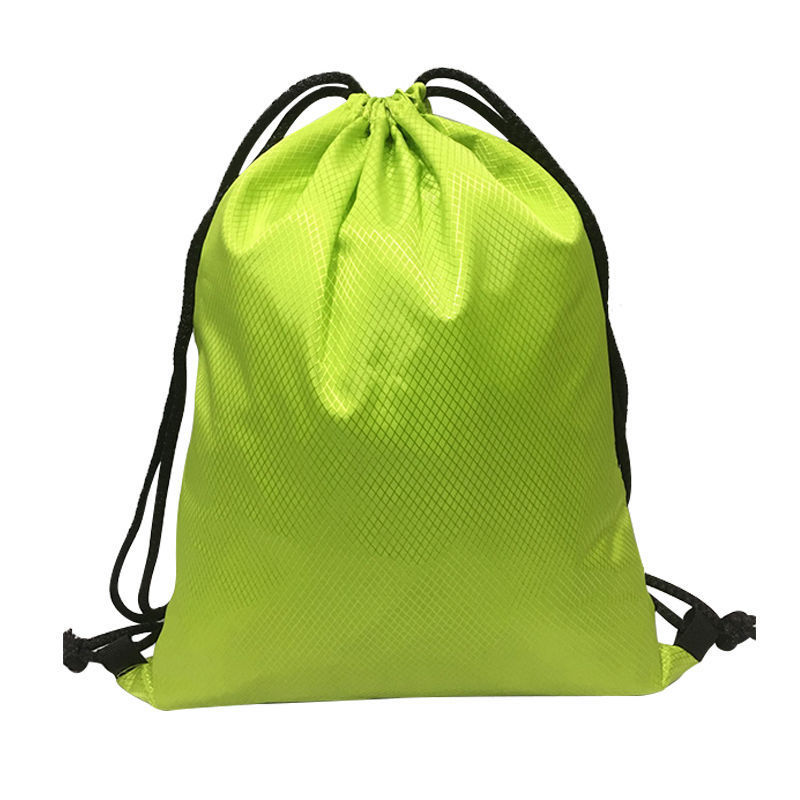Rapid Production Strategies for International Sports Event Supporter Drawstring Bags
While the Paris Olympic mascots continue to trend across social media, a quieter race is unfolding behind the scenes—within the global supply chain. The production cycle for supporter drawstring bags has evolved to operate on an hourly scale. These products carry a unique significance: they must capture the fans’ emotional surges in real time, pass the litmus test of cross-cultural aesthetics, and arrive at retail endpoints across the globe before the medals are awarded.
Unlike traditional flexible manufacturing, which emphasizes “many styles, low quantity,” the event economy calls for “precise bursts”—the ability to convert the miracle of an underdog team’s advancement into tens of thousands of mobile symbols of support within 48 hours. This is a true test of synchronized resonance between industrial systems and collective human emotion.
Three Defining Features of Sports Event Orders
- High Time Sensitivity: Production windows typically last only 5–7 days, from team advancement to the start of the match.
- Highly Volatile Demand: Orders for popular teams can exceed those for underdog teams by more than tenfold.
- Cultural Sensitivity: Accurate representation of national team colors and fan culture elements is essential.
A Closer Look at the “Three-Stage Wave” of Event Supply Chains
1. Pre-Event Phase (3–6 months before kickoff)
- Dual-Color Stockpiling: Stock both core colors and host-event theme colors using a hybrid material preparation strategy.
- Reverse Trend Mapping: Analyze past bestsellers to plot correlations between team popularity and product sales.
- Pre-Planned Logistics Channels: Sign "flexible capacity" contracts with air carriers in advance.
2. Peak Phase (During the Event)
- Real-Time Monitoring System: Integrated with Google Trends and Facebook trending dashboards.
- Rapid Redesign Fund: Allocate 5% of total order value for sudden design changes.
- Swarm-Style Production: Break large orders into modular batches of 200 units for agile execution.
3. Long-Tail Phase (1–2 months post-event)
- “Legacy Edition” Product Development: Repurpose designs from eliminated teams into limited-edition collectibles.
- Eco-Friendly Recycling Campaign: Launch versions made with 30% recycled materials.
- Data Asset Consolidation: Build a multidimensional demand model by country, event, and product type.
Our Solutions
1. Flexible Material Inventory
- Maintain a base stock of 3 tons of standard fabrics (black, white, red, blue).
- Partner with local dyeing houses to offer a “48-hour color match channel.”
- Develop a universal component library (drawstrings, webbing, etc.).
2. Modular Production Workflow Drawstring bags are divided into five standard modules:
- ① Fabric Cutting → ② Pattern Printing → ③ Bag Stitching → ④ Drawstring Assembly → ⑤ Quality Check & Packaging
- Each stage maintains a 20% surge capacity for quick reconfiguration in urgent cases.
3. Rapid Sampling System
- 12 pre-set templates for standard drawstring bag sizes.
- Digital direct-to-fabric printing enables samples within 2 hours.
- Dual-approval mechanism: both physical and digital samples for client confirmation.
Real-World Case Study: Qatar World Cup
- In November 2022, a Middle Eastern client placed an urgent order just 36 hours after the Round of 16 teams were confirmed:
- 12,000 supporter bags across 8 advancing teams
- Production timeline: 7 days including air freight to Doha
- We delivered on time by: ✓ Activating reserved white base fabric inventory
- ✓ Operating day/night alternating shifts
- ✓ Running “inline quality control” during production
- ✓ Coordinating real-time with Dubai transit warehouse logistics
Four Key Questions Clients Ask
- Minimum Order Quantity: Standard is 500 units; event-specific orders can start from 200 units.
- Lead Time (excluding shipping):
- 1,000 units: 3–4 days
- 5,000 units: 5–7 days
- Quality Assurance: 3 retained samples per batch; third-party inspection reports available on request.
- Design Flexibility: Up to 2 visual redesigns allowed during production.
Why Choose Us?
- Strategic Location: Factory located in the Yangtze River Delta textile hub—within a 50 km radius of all raw material suppliers.
- Proven Track Record: Supplier for 5 Olympic Games and 3 FIFA World Cups.
- Contingency Planning: Backup production schemes enable quick pivoting when teams are unexpectedly eliminated.
Conclusion
The production of supporter merchandise for international sports events is essentially a multidimensional systems challenge. It requires mastering both physical constraints of time and distance, and the symbolic immediacy of cultural expression. From heatmap-driven inventory prep to neural-network-based demand prediction, China’s supply chain is transforming the event economy’s pulse-driven volatility into measurable, modular industrial flows.
When magnetic fixtures on a production line sync with social media trend dashboards in a closed-loop feedback system, manufacturing responsiveness begins to outpace the real-time nature of the events themselves. This systemized ability to convert emotional resonance into tangible goods is not only redefining the logic of fan merchandise—it is quietly constructing a material bridge to cultural identity. In every crease of a drawstring bag, a modern parable of industrial scalability and human connection is folded into being.



 We like to do design according to all the customers' requirements, or offer them our new designs. With strong OEM/ODM capabilities, we can fill your sourcing demands.
We like to do design according to all the customers' requirements, or offer them our new designs. With strong OEM/ODM capabilities, we can fill your sourcing demands.